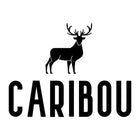About Caribou
Caribou, scientifically known as Rangifer tarandus, are majestic and resilient animals that inhabit the northern regions of North America, Europe, Asia, and Greenland. Also referred to as reindeer in certain regions, caribou are well-adapted to thrive in the harsh Arctic and subarctic environments. They are part of the Cervidae family, which includes deer, moose, and elk.
Physical Characteristics: Caribou are known for their impressive antlers, which are found in both males and females. Their antlers are large and branching, with a distinctive shape that varies depending on the subspecies and age of the individual. Male caribou shed their antlers after the mating season, while females often retain them until spring.
Caribou have a stocky build and are well-suited for life in cold climates. They possess a dense double-layered coat, consisting of a coarse outer layer and a thick, insulating underlayer of fur. This adaptation enables them to withstand extreme temperatures and provides effective insulation against the freezing cold.
Behavior and Migration: One of the most remarkable aspects of caribou is their long-distance migrations. They are known for undertaking epic journeys, traveling hundreds or even thousands of miles each year in search of food and suitable habitats. These migrations are driven by the need to find nutritious vegetation throughout the seasons.
Caribou typically form large herds, which can include thousands of individuals. The herds offer protection against predators and enhance their chances of locating food sources. During the mating season, also known as the rut, dominant males compete for the opportunity to mate with receptive females. This period is marked by impressive displays of strength and dominance, with males engaging in intense battles using their antlers.
Ecological Importance: Caribou play a crucial role in the Arctic and subarctic ecosystems they inhabit. As herbivores, they graze on a variety of plants, including lichens, grasses, sedges, and shrubs. Through their foraging activities, they help maintain a balance in vegetation growth and prevent overgrowth in certain areas. Caribou also serve as prey for predators such as wolves, bears, and lynx, contributing to the overall ecological food chain.
Conservation Status: Caribou populations face numerous challenges and are considered to be a species of concern in certain regions. Factors such as habitat loss, climate change, predation, and hunting have impacted caribou numbers in some areas. Efforts are being made by conservation organizations, governments, and local communities to protect and restore caribou habitats, manage hunting practices sustainably, and mitigate the effects of climate change on their populations.
Caribou and Indigenous Cultures: Caribou hold immense cultural significance for many Indigenous communities in the regions where they are found. They have provided sustenance, clothing, and materials for tools and shelter for generations. Caribou hunting and herding practices are deeply rooted in the traditions, stories, and spiritual beliefs of these communities, reflecting the strong connection between people and nature.
In conclusion, caribou are extraordinary creatures that have adapted to thrive in the harsh Arctic and subarctic environments. Their iconic antlers, endurance during long migrations, and ecological role make them a fascinating and important species. Understanding and preserving these magnificent animals is crucial for maintaining the delicate balance of the northern ecosystems they call home.

